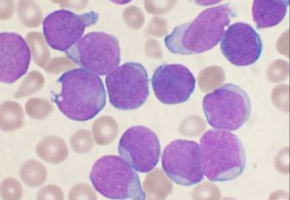
Researchers at the Children's Cancer Institute (Instituto do Câncer Infantil, ICI), the Federal University of Rio Grande do Sul (UFRGS), the Cancer and Neurobiology Laboratory, and the Pediatric Oncology Service at the university hospital (Hospital de Clínicas de Porto Alegre, HCPA) have obtained evidence suggesting that proteins known to regulate neuronal development and plasticity may be useful biomarkers and therapeutic targets in childhood cancers.
These proteins, called neurotrophins, are well-known signalling molecules in normal brain development and function.
The neurotrophin family of proteins, which includes brain-derived neurotrophic factor (BDNF) and nerve growth factor (NGF), activate the Trk family of cell-surface protein receptors.
There is growing interest in investigating how overexpression of neurotrophins and Trk receptors in tumours can stimulate cancer growth and contribute to chemotherapeutic resistance.
Ewing sarcoma is a highly aggressive paediatric cancer that occurs in bone or nearby soft tissue and is characterised by small round blue cells.
It appears to arise from neural crest or mesenchymal cells.
The biological alterations underlying Ewing sarcoma typically include gene fusions involving the EWS and FLI-1 genes.
Advances in multimodality therapy, in which cytotoxic chemotherapy is combined with surgery or radiotherapy, have improved clinical outcomes.
However, survival rates remain unsatisfactory, with 5-year survival rates currently being approximately 70% overall, but only 56% among older teens, and just 15-30% if overt metastasis has already occurred before starting treatment.
In a study published in the journal Oncotarget, Tiago Heinen and colleagues showed that Trks are expressed in Ewing tumours from patients.
When the researchers used selective inhibitors to block TrkA and TrkB (receptors for NGF and BDNF, respectively) in cultured Ewing sarcoma, tumour cell growth and survival were inhibited, with stronger inhibition being observed when both receptors were inhibited simultaneously.
Furthermore, Trk inhibition also made the tumour cells more susceptible to chemotherapeutic drugs currently used to treat patients with Ewing sarcoma, even when cells were conditioned to become resistant to chemotherapy.
Notably, levels of beta-III tubulin, a protein involved in tumour aggressiveness, were reduced in cells treated with Trk inhibitors.
In a previous study by the same group, published in the Journal of Molecular Neuroscience, Amanda Thomaz and colleagues found that TrkB inhibition reduced the viability and survival of medulloblastoma cells.
Currently, one third of patients with medulloblastoma, the most common form of paediatric brain cancer, have a low chance of being cured.
Survivors often suffer from long-term neurological disabilities due to the adverse effects of chemotherapeutics, radiotherapy, and surgery.
"These studies provide the first evidence that inhibiting neurotrophin signalling can yield anticancer effects on Ewing sarcoma and medulloblastoma. The findings may lead to improvements in treatment effectiveness", says UFRGS professor and senior author of the studies, Dr Rafael Roesler.
In addition to being drug targets, neurotrophins may also serve as biomarkers of childhood cancers.
In a study involving 71 children (including adolescents) with acute myeloid leukaemia or acute lymphoid leukaemia and 44 healthy controls, Julia Portich, Mirela Gil, and colleagues found that BDNF levels in the plasma or blood marrow of leukaemia patients were significantly reduced during active stages of the disease (diagnosis and relapse), and returned to normal during remission.
Importantly, BDNF levels at the time of diagnosis were significantly lower in patients who ultimately died than in those who survived.
"Our findings suggest that measuring blood levels of BDNF at diagnosis may provide information about disease activity and risk of death that would be helpful for guiding therapeutic decisions", says Dr Caroline Brunetto de Farias, Head of Cellular and Molecular Research at ICI and senior author of the biomarker study, which was presented at the European Cancer Congress in Vienna, Austria in September 2015.
ICI President Dr Algemir Brunetto says, "By fostering this type of research, we aim to increasingly support basic science informed by clinical needs in the field of paediatric oncology in South America."
References
Heinen, dos Santos, da Rocha, A., dos Santos et al. Inhibition reduces cell proliferation and potentiates the effects of chemotherapeutic agents in Ewing sarcoma. Oncotarget, 2016; Apr 26.
Portich, Gil, Kersting et al. BDNF as a potential new biomarker in childhood acute leukemia. European Journal of Cancer, 2015; 51(Supplement 3); S35.
Thomaz, Jaeger, Buendia. BDNF/TrkB signaling as a potential novel target in pediatric brain tumors: anticancer activity of selective TrkB inhibition in medulloblastoma cells. Journal of Molecular Neuroscience, 2015; Nov 27.
Source: Write Science Right
We are an independent charity and are not backed by a large company or society. We raise every penny ourselves to improve the standards of cancer care through education. You can help us continue our work to address inequalities in cancer care by making a donation.
Any donation, however small, contributes directly towards the costs of creating and sharing free oncology education.
Together we can get better outcomes for patients by tackling global inequalities in access to the results of cancer research.
Thank you for your support.